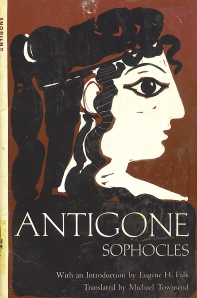Filed under: Art, Books, Design, Inspiration, Local artists, Oregon, Portland | Tags: cover design, hand painted, handmade, journal, leatherbound, notebook, paint, paper, stitch, Touch the Sky

Photo credit: Touch the Sky
Why not have a cool place to put it all? I love and collect notebooks of any kind, notebooks meaning paper bound with a coil. They can be sketch books or journals or notepads. I have some I’ve never used, and they are a constant inspiration for me and someday I hope to be doing more of my own. I’d still like to get my hands on one of these though. I found this local artist through another artist’s website. Called Touch the Sky, Karen Saro Troeger creates these custom journals and notebooks using marbeled papers, Japanese and Italian papers, or her own hand painted paste papers. I lke the hand painted ones the best, but she also has a collection of leather jounral designs that are handsewn the historical linestich style, are accented with natural mineral and stone beads, and contain 140 recycled sheets of paper. There are so many designs to choose from, and her hand painted journals are very affordable at only $16 apiece. She also makes window books and unique photo books that fold in all sorts of funky ways as well as hand weaved and tin jewelery.
Filed under: Books, Design | Tags: Antigone, book, cover art, cover design, Greek, play, Sophocles
 This week I’m reading the Antigone play by Sophocles. While I was going through a box of books my roommate left behind, I found this old copy of the famous play I’d only ever encountered once before in middle school. I saved it not only because its a classic-but also because quite honestly, I find the cover art very charming. I like how the more primitive style of the flat, two-dimensional facial features and over-exaggerated eye really take me back in time to ancient Greece, as the play was meant to be interpreted. Here’s a semi-brief summary of the play:
This week I’m reading the Antigone play by Sophocles. While I was going through a box of books my roommate left behind, I found this old copy of the famous play I’d only ever encountered once before in middle school. I saved it not only because its a classic-but also because quite honestly, I find the cover art very charming. I like how the more primitive style of the flat, two-dimensional facial features and over-exaggerated eye really take me back in time to ancient Greece, as the play was meant to be interpreted. Here’s a semi-brief summary of the play:
Antigone is the daughter of King Oedipus of Thebes who was exiled from his throne. Antigone left the city of Thebes after Oedipus was overthrown, and returned after his death. Both of her brothers Eteocles and Polynices killed each other over the crown. King Creon, the central character of the story and now king of Thebes, grants a proper burial to Eteocles but not Polynices, because he led a foreign army against his own city-state.
Keep in mind that according to the Greek view of death, a person’s soul could never find rest until the body was properly buried.
Antigone intends to defy King Creon, and enlists the help of her sister Ismene who refuses to help because she believes as women they are too weak to go against the King. After attempting to bury Polynices’ body, Antigone is captured and brought before Creon. She admits her guilt, and Creon sentences her to die. What adds an interesting twist is that Haemon, son of Creon, is in love with Antigone. He attempts to advise his father, pleading for him to have mercy. Creon refuses to listen to his son but reluctantly heeds the words of a prophet and the elders of Thebes when they tell him that he will be cursed for his tyranny and sentencing Antigone to death. He rushes out to bury Polynices and free Antigone, but Antigone commits suicide and Haemon does the same upon discovering her body. Queen Eurydice, when informed of her son’s death, also kills herself. Creon acknowledges his responsibility for these tragic events and as penance prays that he may die soon.
It’s an interesting read, and quick to get through. I also love collecting used books, because sometimes you can find interesting bits of information about the person who read them before. While reading this it’s fun to go through underlined passages and margin notes left by my roommate, who played King Creon in high school wearing a Burger King crown (no joke).
Another reason I picked up this book this week is because I’m going to see the play in a few days. I’ll post a follow-up review of the play this weekend. You can find this book or other versions of the play for dirt cheap here at Half.com, which has become my latest resource for books, movies, and music; my holy trinity.